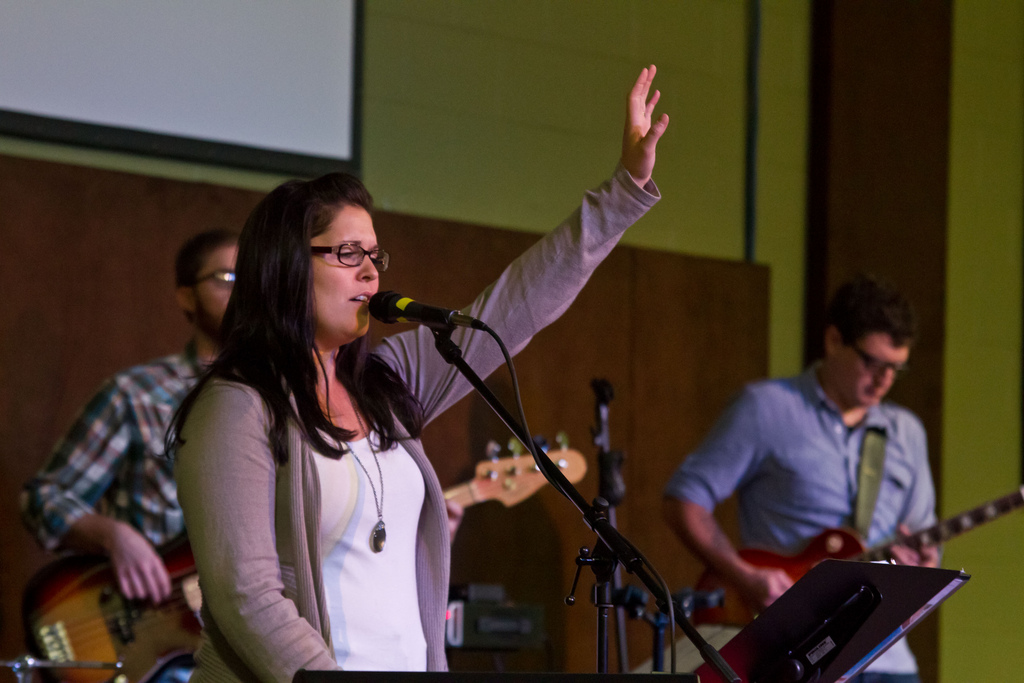 Nothing in the songwriter’s craft is more mysterious than the creation of a good melody. It’s not an exact science – its art. And yet without a strong melody, most people won’t pay attention to your lyrics. In an interview with me here at My Song In The Night, John Mark McMillan said,
Nothing in the songwriter’s craft is more mysterious than the creation of a good melody. It’s not an exact science – its art. And yet without a strong melody, most people won’t pay attention to your lyrics. In an interview with me here at My Song In The Night, John Mark McMillan said,
“The words and the music have to work together to create that vibe, that overall experience.
“Marshall McLuhan coined the phrase ‘The medium is the message.’ Christian music and the church as a whole could pay attention to that. We forget that the words are the last little piece of the message. The real story is told in the things you do and the way you do it.
“I want to put everything into my music so that the music and the lyrics tell a story together — the same story.”
I can’t guarantee that you’ll write a good melody by following “the rules.” Nor can I promise that people will hate your melody if you disregard “the rules.” But there are basic principles that have worked for numerous worship songs. We’ll talk about these principles in a series of posts over the next several weeks. You will increase your odds of composing singable, interesting melodies if you allow these principles to shape most of your songs.
Principle #1: Simple And Singable
Worship songwriters have a responsibility that is foreign to many of the most well respected singer-songwriters and bands you’ll hear on the radio, TV and live shows. Our melodies must not only be interesting, they must be simple enough for the average person to sing. If church congregations can’t sing along after hearing our song just one or two times, we lose.
John Witvliet is director of the Calvin Institute of Christian Worship and professor of worship, theology, and congregational & ministry studies at Calvin College and Calvin Theological Seminary. In a podcast interview with Mike Cosper, Witvliet said he asks this question of songwriters and worship leaders,
“Is this song genuinely singable by a congregation? That’s not a consideration for radio or concerts, but it must be for congregational worship songs.
“You must understand that question. You must love that question. You must thrill to hear a congregation singing together. Do you have a passion for it?”
This is why the most lasting hymns and praise songs tend to contain concise, symmetrical phrases, simple melodic lines and plenty of melodic repetition. It’s easy for a congregation to feel an emotional connection to a melody they can easily sing on Sunday and remember during the week.
Also pay attention to the intervals in your melody (the number of scale steps from one note to the next). If your intervals leap all over the place, your song will have a herky-jerky feel that is difficult or unpleasant to sing, even if the entire melody is confined to one octave. Most of your intervals should be step intervals (up or down one scale step). Save your leap intervals for spare moments when you need the music to swell.
Finally, remember that you’re writing for both genders, not just your own. As Vicky Beeching has written:
“Make sure it works for the male and female vocal range – if the song is meant to be sung in church, it needs to be singable by both men and women (who have very different vocal ranges). Gather some guy and girl friends and have them all sing it with you. See if it works for everyone’s voices. If not, try and find a melody everyone can join in with. It’s really tricky to make this work, but many worship songs don’t – and half the congregation will be struggling to join in, or desperately trying to harmonize, to find a melody they can actually reach! “
Next time I’ll write specifically about the melodic range you should aim for in your songs.
{ 1 trackback }